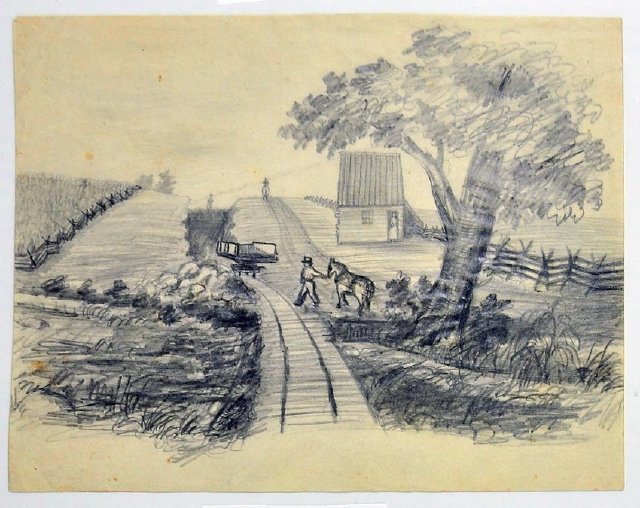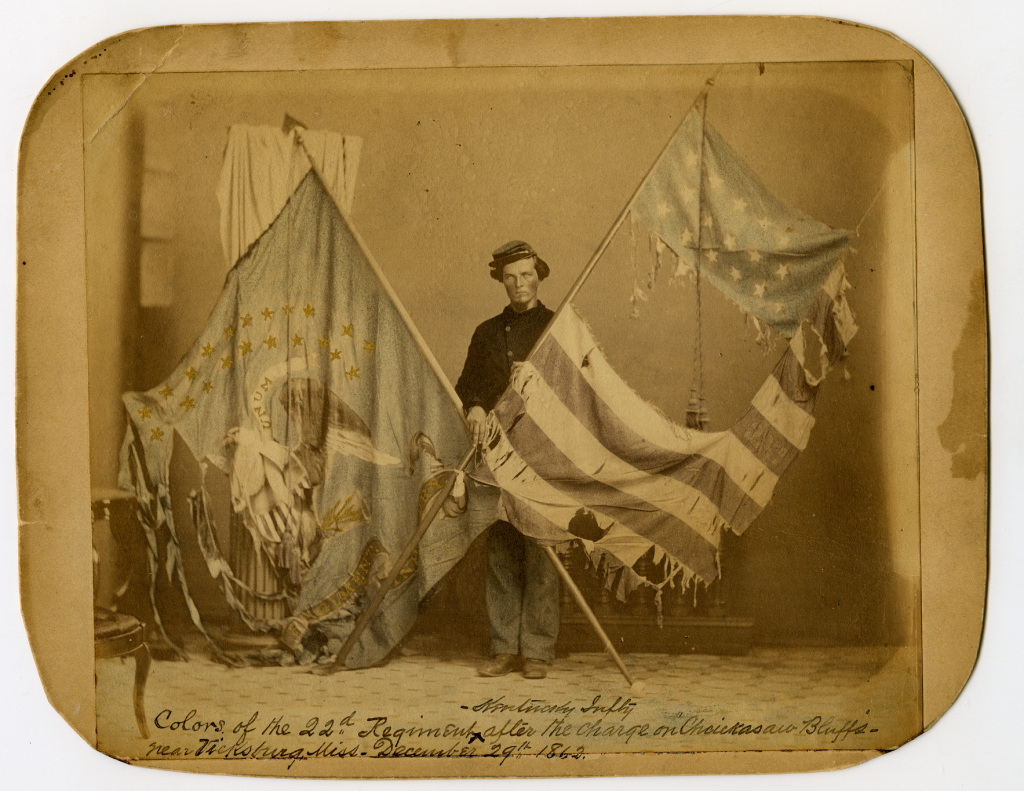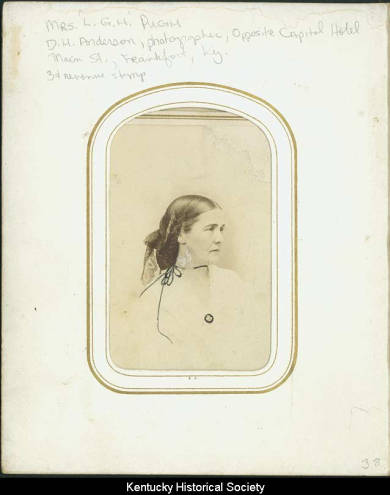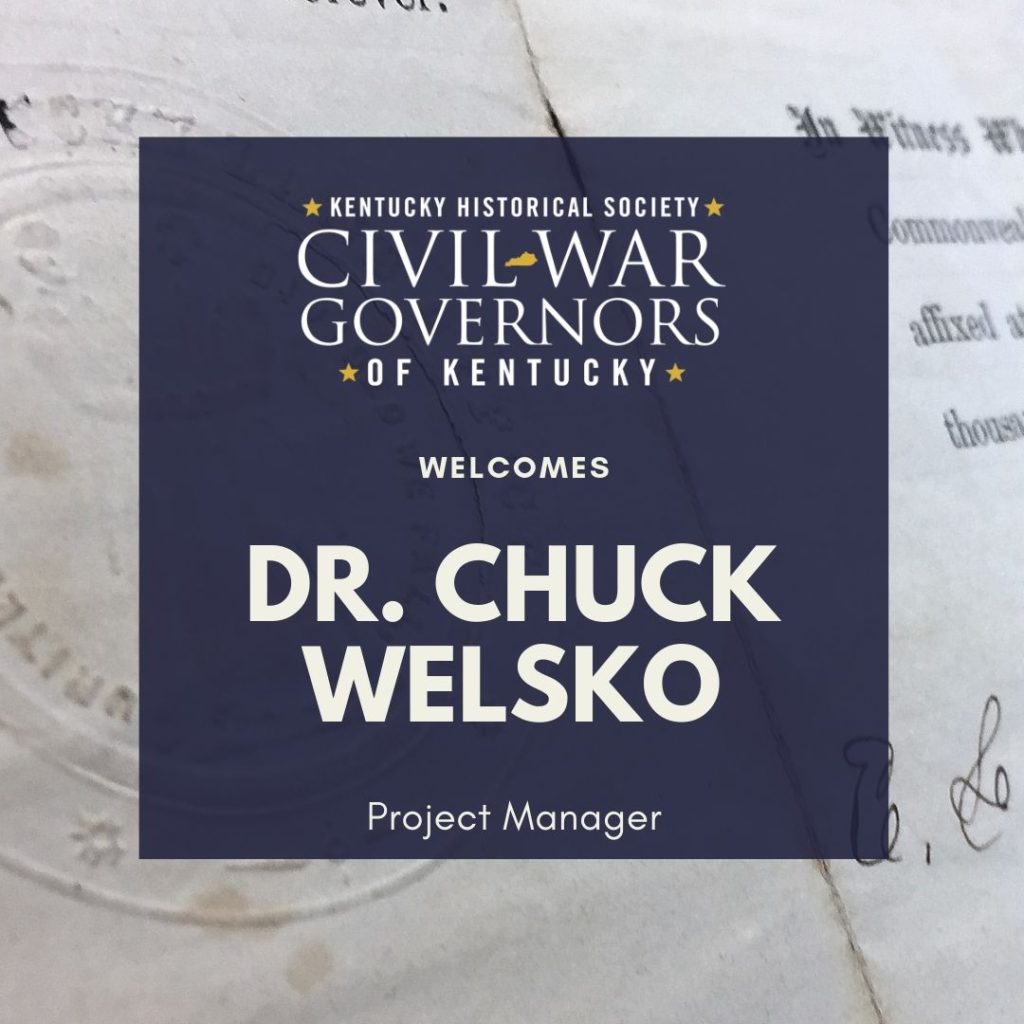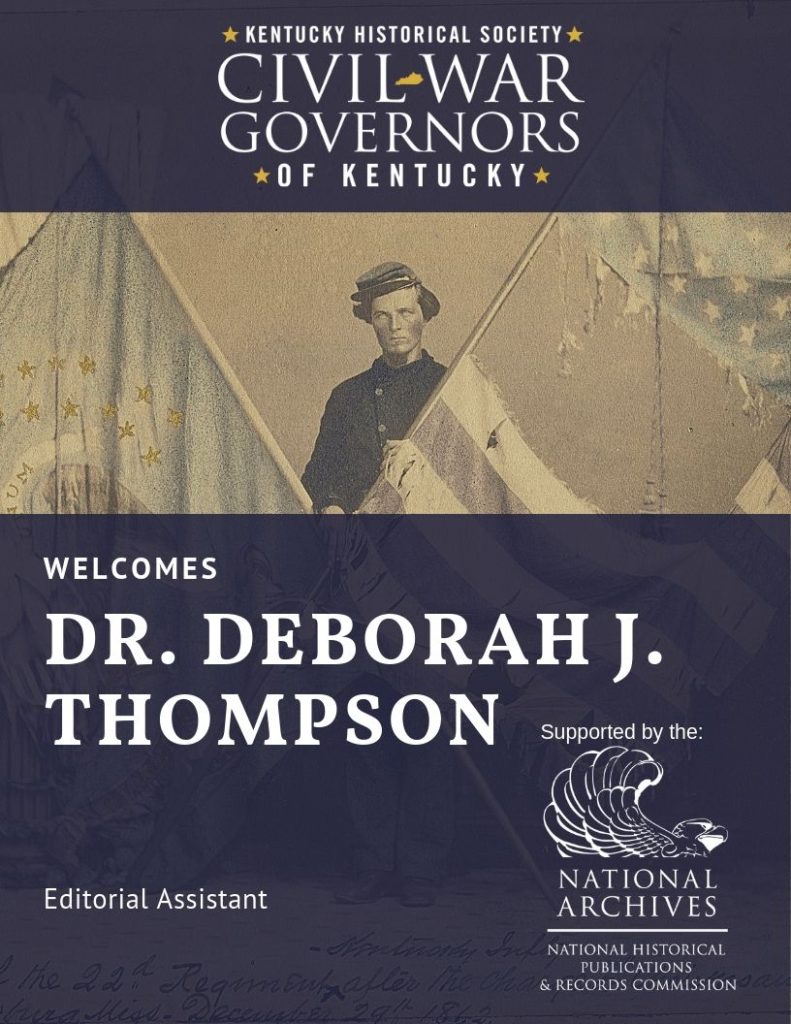[This is the third
installment of a four-part series]
Between July 1862, when Camp Chase
began to receive large numbers of political detainees, and October 1862, when
many of these cases began to be resolved, the prison received over 550 citizen
prisoners, nearly half of whom were from Kentucky.[1] Among these Kentucky citizens was Edward
Stevenson, a Methodist minister and Russellville resident who was arrestedon suspicion of being – as Stevenson
himself later reported — “a rabbid, or prominent Secessionist” and chairman of
a “Home Committee on Safety,” an organization erroneously presumed to have
existed for the purpose of harassing Unionists.[2] Stevenson came under suspicion of Union forces,
in part, for having participated in an ad hoc system of identifying supposed
“dangerous” persons during the Confederate occupation of Russellville;
ironically, that process closely resembled the one by which Stevenson later found
himself incarcerated at Camp Chase.
In August 1862, Stevenson was one of 37 prisoners from Camp Chase
Prison No. 1 who petitioned Kentucky governor James Robinson to intervene in what
they clearly articulated as a violation of legal norms.[3]
Earlier in the month, a similar petition signed by 93 Kentuckians in Prison No.
2 was addressed to Robinson’s predecessor, Beriah Magoffin, who in the interim,
resigned the Kentucky governorship.[4]
In addition to signing that petition, Stevenson also appealed to
Governor Robinson and federal officials through personal correspondence. In a
letter to Robinson dated August 18, Stevenson acknowledged that he had served
as chairman of the safety committee but denied that he was a secessionist. He regarded
secession as a “rash and reckless course,” of which he strongly disapproved. He
did, however, admit to opposing U.S. war policy, as he did not believe the
shedding of blood was the best way to preserve the Union.[5] But he
also claimed he had not made his sentiments publicly known. “If I ever
cherished a disloyal sentiment, uttered a disloyal word, or performed a
disloyal act,” Stevenson wrote, “I am not conscious of having done so.”[6]
He justified his involvement with the safety committee, which had been
appointed by residents of Russellville during the Confederate occupation, as
being an agent of reason and restraint. His hope, he claimed, was “doing some
good; and especially in protecting peaceable citizens, from the violence of
misguided and reckless southern citizens and soldiers.”[7]
Indeed, when he offered a detailed account of the workings of that committee to
Joseph Holt—who was a few weeks away from being named judge advocate general of
the army—Stevenson claimed that when the civil authorities of his town were displaced
by the Confederate invasion, the committee had been formed with the intention
of protecting peaceable citizens. He also noted that Unionists had expressed
gratitude to the committee for the protections it had provided.[8] By
Stevenson’s account, the Home Committee on Safety also served in a capacity
similar to that of the U.S. special commissioner in the cases of political
prisoners. Ordered to “arrest all dangerous persons found in the community,”
the Confederate commander at Russellville, according to Stevenson, proposed
that the safety committee review the cases and, if the committee judged the
persons “peaceable citizens,” they would be “promptly discharged.” The committee, Stevenson recalled, regarded
this arrangement as an opportunity for “the protection of the innocent
and unoffending from personal and military violence” and readily accepted the
responsibility. Perhaps with a hint to his own jailers, Stevenson noted that
“all who were turned over to the comte were judged to be peaceable
citizens, and with one exception, were all immediately released.”[9]
The exception was a Mr. Finley, who was given a choice by the Confederate
occupiers of taking an oath of allegiance to the Confederacy, becoming a
prisoner, or being sent beyond Confederate lines. When Finley refused to take
the loyalty oath or choose between the other options, the committee was asked to
decide for him. They determined that sending him beyond Confederate lines posed
the “least affliction” to Finley and his family, but their recommendation,
according to Stevenson, was misstated as a “mandatory resolution,” which appeared
to be the source of the claim that the committee had mistreated Unionists. The
members eventually rescinded their decision, and Finley was allowed to remain
in Russellville without being taken prisoner.[10]
Of the five members of the Committee on Safety who were
subsequently arrested by U.S. authorities, only Edward Stevenson and one other,
James McCallen, were detained and sent to Camp Chase.[11]
When General Boyle was consulted about their applications for release, he
recommended that McCallen be discharged on condition of taking a loyalty oath
and executing bond. Without offering to expound on his claims, Boyle advised
that Stevenson be detained, as he had “exerted all of his influence against the
Government and has been a most pestilent disciminator of treason.”[12]
Russellville residents M. B. Morton and John B. Peyton
corroborated Stevenson’s account of the Committee on Safety. In a letter signed
by both men, they affirmed that “a vast amount of mischief and trouble was
prevented by the labors of that committee.” Stevenson, they attested, “labored
with unremitting efforts and with all his influence to those ends.”[13]
In its first iteration, Peyton had
served on the Military Board of Kentucky, an organization created primarily to
prevent then-governor Beriah Magoffin from using the state’s military resources
to support the Confederacy.[14]
Peyton had also been one of the five members of the safety committee initially
arrested along with Stevenson.[15]
Their legal fates would continue to be entwined even after Stevenson’s
incarceration.
On October 7, Reuben Hitchcock, the special commissioner
appointed to examine the cases of civilian prisoners, issued his recommendation
in Stevenson’s case. Hitchcock judged Stevenson to be “a man of considerable
influence, of peaceble & quiet disposition, Southern Rights in his
political Sentiments, but disposed to submit to and follow the actions of his
State.” Hitchcock determined that Stevenson and most of the other members of
the Russellville Home Committee on Safety had “labored fruitfully to prevent
violence and outrage upon the person or property of either Union or Secession
men.” Believing he could be “discharged without danger to the public peace
& interest,” Hitchcock recommended that Stevenson be released on condition
of taking an oath of allegiance to the United Sates and giving $3,000 bond as
“security for his good behavior.”[16]
In light of that recommendation and Stevenson’s “greatly
infeebeld health,” he was paroled to Columbus for ten days but feared the
parole would expire before an order for release could be obtained. He appealed
to Governor Robinson to request an extension from Ohio governor David Tod so
that he would not be required to return to prison. “An other
weeks confinement and exposure in that place will terminate
my earthly existence,” Stevenson predicted. He also confided to Robinson that he
was eager to “get Home and die in the bosom of the little remnant of my
once hapy, but now deeply afflicted family.”[17]
Stevenson was released from federal custody on October 20, 1862.[18] But
his legal troubles did not end there.
Although the system of political detentions operated
separately from the criminal justice system and typically did not result in
prosecutions,Stevenson and John B.
Peyton, the ex-Military Board member who was also involved with the safety
committee, were indicted by a federal grand jury.[19]
After Peyton successfully petitioned for a presidential pardon, Stevenson pursued
a similar legal strategy.[20]
Once again, Peyton lobbied on Stevenson’s behalf. Enlisting the aid of John B.
Temple, a former president of the Military Board, Peyton wrote that he had witnessed
Stevenson “going through inclement weather day and night, at his advanced age
and in feeble health, to the camps and headquarters of the military to procure
the release of arrested Union citizens.” Peyton added that after Stevenson’s
“self-sacrificing and devoted efforts to prevent oppression and misrule,” for
him to be made “the subject of cruel misrepresentation and rank injustice is
particularly hard.” Peyton argued that even if Stevenson were “the man that
cruel misrepresentation” had made him out be, his “long imprisonment in Camp
Chase” should have been sufficient punishment.[21]
Writing to Kentucky Congressman Henry Grider, Temple, who had known Stevenson
since childhood, declared that it was “a stigma upon the government that men
who banded themselves to alleviate the horrors of this war should be so
pertinaciously pursued while so much greater offences were not so vigorously
pursued.” Temple also recounted his discussions with U.S. attorney James Harlan.
“I happen to know,” Temple wrote, “that Hon Mr. Harlan considered many
indictments found by the Federal Grand Juries as not well founded & had
declared his determination to dismiss this one—He told me that many indictments
or true bills were formed when he was too much engaged to instruct the juries
as to their duty.” Temple added that a Union military commander at Russellville
had investigated the matter of the safety committee and found the members to be
“guilty of no fault.”[22]
President Lincoln ordered a pardon for
Edward Stevenson on January 13, 1864. [23]
Stevenson died nearly six months later,
on July 6, 1864.[24]
As for the other Camp Chase petitioners who sought assistance
from the Kentucky governor in the summer of 1862, in the majority of cases, they
were released by the end of the year on condition of taking a loyalty oath. A
few were required to take the oath and secure a bond in amounts ranging from
$500 to $5,000.[25]
Advising a subordinate in February 1863, General Horatio Wright aptly
explained the potential pitfalls of citizen detentions. He described a class of
citizens in Kentucky who “while never having left their homes or taken up arms
in the rebel cause have by their acts proved themselves enemies to the United
States.” Wright did not elaborate on these acts but advised that on “proper proof,”
such citizens should be arrested and sent with written charges to Camp Chase,
adding that “many such [citizens] give no chance for obtaining evidence of
their disloyalty, while they are notoriously disloyal.” Describing this group
as “often more dangerous than open enemies,” Wright recounted how they were
arrested when a “sound judgment indicated a necessity” and then released when
the necessity had passed. But he also advised “great prudence” in exercising
the power of arrest, as “individuals entirely innocent of any disloyal design
may be arrested and imprisoned upon the evidence of the over-zealous patriot or
the designing enemy.” Wright pointed to the “numerous discharges” of Camp Chase
prisoners as evidence of this systemic flaw.[26]
Aside from the often arbitrary nature of political detentions and
the apparent lack of due process they entailed, the reports of a government
detectivealso call into question
their effectiveness in preventing acts of subversion. Posing as a Confederate
sympathizer in Lexington in the summer of 1864, Ed F. Hoffman made contact with
Daniel Wiehl, who was imprisoned in Camp Chase from August to December of 1862.
Wiehl apparently fell under suspicion at least one other time, as Hoffman
reported that Wiehl had taken the oath of allegiance twice.[27]
Hoffman’s dispatches indicate that, despite having sworn his loyalty to the
U.S., Wiehl provided information to Hoffman about a secret route taken by
recruits leaving Lexington to enlist in the Confederate army.[28]
It was not uncommon for residents to take the oath while concealing their true
sympathies.[29]
[1] Statistics Compiled from lists of prisoners received at Camp Chase for July-October 1862, Selected Records of the War Department Relating to Confederate Prisoners of War, 1861-1865, NARA RG 109, Microfilm Series M598, Roll 25, accessed via Ancestry.com.
[2] Edward Stevenson to James F. Robinson, 18 August 1862, Office of the Governor, James F. Robinson: Governor’s Official Correspondence File, Petitions for Pardons, Remissions, and Respites, 1862-1863, R3-105, Kentucky Department for Libraries and Archives, Frankfort, KY, accessed via the Civil War Governors of Kentucky Digital Documentary Edition, http://discovery.civilwargovernors.org/document/KYR-0001-029-0065; M. B. Morton and J. B. Peyton to J. J. Crittenden, 10 July 1862, Case Files of Investigations by Levi C. Turner and Lafayette C. Baker, 1861-1865, NARA RG 94, Microfilm Series M797, Roll 0018, Case File #550, p. 19, accessed via Fold3.com, https://www.fold3.com/image/257012348.
[3] Thomas S. Bronston, Jr. et al. to James F. Robinson, 19 August 1862, Office of the Governor, James F. Robinson: Governor’s Official Correspondence File, Military Correspondence, 1862-1863, R2-9 to R2-10, Kentucky Department for Libraries and Archives, Frankfort, KY, accessed via the Civil War Governors of Kentucky Digital Documentary Edition, http://discovery.civilwargovernors.org/document/KYR-0001-027-0008.
[4] Robert Maddox et al., “Letter from Prisoners at Camp Chase to Governor Magoffin,” Journal of the Senate of the Commonwealth of Kentucky, Begun and Held in the Town of Frankfort, on Monday, the Second Day of September, In The Year Of Our Lord 1861, And of the Commonwealth the Seventieth (Frankfort, KY: Yeoman Office, 1861), 617; Lowell Harrison, ed., Kentucky’s Governors (Lexington: University Press of Kentucky, 2004), 80.
[5] Stevenson to Robinson.
[6] Ibid.
[7] Ibid.
[8] Edward Stevenson to Joseph Holt, July 1862, Case Files of Investigations by Levi C. Turner and Lafayette C. Baker, 1861-1865, NARA RG 94, Microfilm Series M797, Roll 0018, Case File #550, p. 7, accessed via Fold3.com, https://www.fold3.com/image/257012232.
[9] Stevenson to Holt, 7.
[10] Ibid, 9.
[11] Ibid, 10-11.
[12] J. T. Boyle to L. C. Turner, 21 August 1862, Case Files of Investigations by Levi C. Turner and Lafayette C. Baker, 1861-1865, NARA RG 94, Microfilm Series M797, Roll 0018, Case File #550, p. 33, accessed via Fold3.com, https://www.fold3.com/image/257012459.
[13] Morton and Peyton to to Crittenden, p. 20.
[14] Report of the Adjutant General of the State of Kentucky, vol. 1, 1861-1866(Frankfort: Kentucky Yeoman Office, 1866), vii; E. Merton Coulter, The Civil War and Readjustment in Kentucky, chapter 7 (Chapel Hill: University of North Carolina Press, 1926) Google ebook.
[15] Stevenson to Holt, 11.
[16] Reuben Hitchcock to L. C. Turner, 7 October 1862, Case Files of Investigations by Levi C. Turner and Lafayette C. Baker, 1861-1865, NARA RG 94, Microfilm Series M797, Roll 0018, Case File #550, p. 41, accessed via Fold3.com,https://www.fold3.com/image/257012521.
[17] Edward Stevenson to James F. Robinson, 11 October 1862, Office of the Governor, James F. Robinson: Governor’s Official Correspondence File, Military Correspondence, 1862-1863, R2-89, Kentucky Department for Libraries and Archives, Frankfort, KY, accessed via the Civil War Governors of Kentucky Digital Documentary Edition, http://discovery.civilwargovernors.org/document/KYR-0001-027-0057.
[18] “Roll of Prisoners of War at Camp Chase Ohio,” Selected Records of the War Department Relating to Confederate Prisoners of War, NARA RG 109, Microfilm Series M598, Roll 24, accessed via Ancestry.com, https://www.ancestrylibrary.com/interactive/1124/M598_24-0246; “1862 List of Prisoners Released from Confinement at Camp Chase,” Selected Records of the War Department Relating to Confederate Prisoners of War, NARA RG 109, Microfilm Publication M598, Roll 26, accessed via Ancestry.com, https://www.ancestrylibrary.com/interactive/1124/M598_26-0280.
[19] Neff, Justice in Blue and Gray, 158; Edward Stevenson to H. Grider, 31 December 1863, Case Files of Applications from Former Confederates for Presidential Pardons (“Amnesty Papers”), 1865-67, NARA RG 94, Microfilm Series M1003, Roll 0026, Edward Stevenson File, p. 12, accessed via Fold3.com, https://www.fold3.com/image/249/20662935.
[20] Stevenson to Grider, 12.
[21] John B. Peyton to J. B. Temple, 31 December 183, Amnesty Papers, compiled 1865 – 1867, NARA RG 94, Microfilm Series M1003, Roll 0026, Edward Stevenson File, p. 16, accessed via Fold3.com, https://www.fold3.com/image/249/20662957.
[22] J. B. Temple to Henry Grider, Amnesty Papers, compiled 1865 – 1867, NARA RG 94, Microfilm Series M1003, Roll 0026, Edward Stevenson File, p. 17, accessed via Fold3.com, https://www.fold3.com/image/20662965.
[23] Amnesty Papers, 1, https://www.fold3.com/image/20661838.[24] _Find A Grave_, “Rev Edward Stevenson (1797- 1864),” Memorial #123746647, https://www.findagrave.com/memorial/123746647 (accessed October 15, 2018).
[25] “Roll of Prisoners of War at Camp Chase Ohio;” “1862 List of Prisoners Released from Confinement at Camp Chase.”
[26] H. G. Wright to Brigadier General White, OR, series 2, vol. 5: 300.
[27] Ed. F. Hoffman to J. P. Sanderson, OR, series 2, vol. 7: 302-303, 336; “Roll of Prisoners of War at Camp Chase Ohio Red During August 1862,” Selected Records of the War Department Relating to Confederate Prisoners of War, NARA RG 109, Microfilm Series M598, accessed via Ancestry.com, https://www.ancestrylibrary.com/interactive/1124/M598_24-0254.
[28] Ed. F. Hoffman to J. P. Sanderson, OR, series 2, vol. 7: 304.
[29] Christopher Phillips, “Netherworld Of War: The Dominion System and the Contours of Federal Occupation in Kentucky,” Register of the Kentucky Historical Society, 110, no. 3/4 (2012): 343, https://www.jstor.org/stable/23388055.
Christina K. Adkins has a PhD in American Studies and works as a volunteer on the CWGK Team. Her work focuses on slavery and cultural memory.
Check back with CWGK every Monday in January to read a new editions to Political Detentions in the Civil War.
